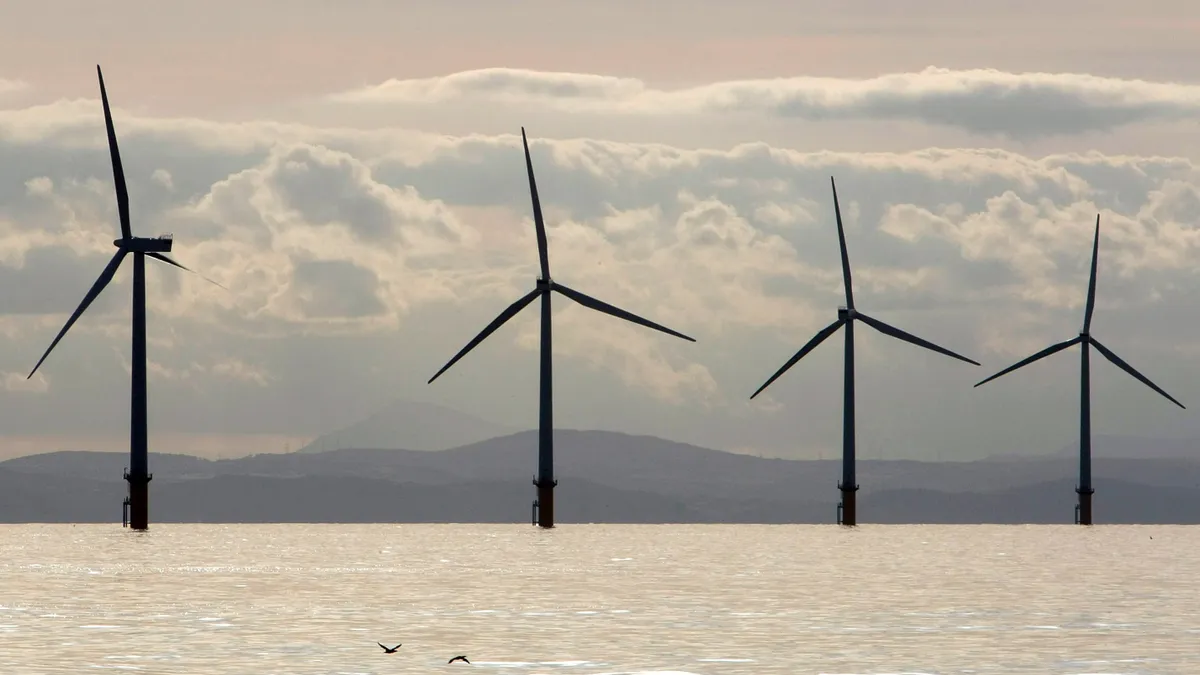Dive Brief:
-
In a process that aligns transmission and wind farm development schedules, PJM Interconnection is reviewing 79 proposed transmission projects designed to support New Jersey's plan for 7,500 MW of offshore wind by 2035.
-
The proposals from incumbent utilities and merchant transmission companies include onshore upgrades, new onshore transmission connection facilities, new offshore connection facilities and offshore networks, PJM said Friday.
-
Companies including Public Service Enterprise Group (PSEG), Anbaric Development Partners and an LS Power subsidiary have said they responded to the solicitation. After PJM makes its recommendations to the New Jersey Board of Public Utilities (BPU), the state agency said it intends to decide in the second half of next year which projects to pursue, if any.
Dive Insight:
PJM's announcement is another step in the race to develop a U.S. offshore wind industry, with some East Coast states aiming to become leaders in the sector.
Last year, New Jersey became the first state to take advantage of PJM's "state agreement approach," which allows a state to propose and pay for transmission upgrades it needs to meet its energy goals. The process helps assure offshore wind farm developers they will be able to deliver power to New Jersey, breaking the "chicken and egg" problem of generation and transmission developers waiting for each other to move forward with their projects first.
As part of the agreement, PJM held a solicitation for offshore transmission proposals that ended Sept. 17. If built, the projects are expected to be operating by 2029, according to PSEG. The process allows wind farms and transmission projects to move forward at the same time.
The grid operator is sorting through the results of the solicitation and could recommend combinations of various proposals to the BPU, according to Aaron Berner, PJM senior manager for transmission planning. Nearly three-quarters of the proposals include cost caps, Berner said.
The BPU expects to start its formal review of the proposals in early 2022 and to make a decision by the end of the year, the agency said in a late-September guidance document. The proposals are currently confidential, but companies making them will be required to file redacted applications so stakeholders can review and comment on them.
PSEG, New Jersey's largest utility company, proposed multiple transmission projects, including an offshore network, Ralph LaRossa, PSEG chief operating officer, said during a Sept. 27 investor conference. The projects would cost about $1 billion, LaRossa said.
PSEG views offshore wind as a key part of its investment strategy, according to LaRossa. The company has a 25% stake in Ørsted North America's 1,100 MW Ocean Wind I project, which the BPU selected in 2019 in its first offshore wind solicitation. The utility company is considering other projects with Ørsted, according to LaRossa.
Meanwhile, transmission company Anbaric submitted a portfolio of 19 projects using 400-kV direct current transmission. One of the projects would deliver 2,800 MW of offshore wind to a substation in South Brunswick, N.J. Joining Anbaric in the proposals were Ferreira Construction and the Ontario Teachers' Pension Plan.
LS Power's subsidiary Rise Light & Power proposed building an interconnection for offshore wind farms at a retired coal-fired power plant site in South Amboy, N.J.
"This level of interest in building transmission for offshore wind is clear evidence of the market enthusiasm for clean energy," Nathanael Greene, senior renewable energy policy analyst for the Natural Resources Defense Council, said in an email.
"We need a lot of clean, renewable energy like offshore wind if we're going to avoid the worst of the climate crisis, and that means we need a lot of transmission," Greene said.
The U.S. has only two operating offshore wind farms — the 30-MW Block Island wind farm off Rhode Island and Dominion Energy's 12-MW Coastal Virginia pilot project — but companies are developing projects totaling 35,324 MW, with 15 projects in the permitting phase, the National Renewable Energy Laboratory said last month.














